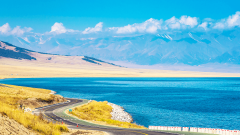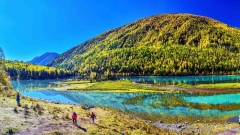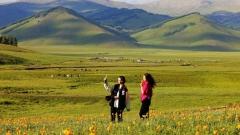When travelers first arrive in Xinjiang, many are surprised to find the sun still shining at 9 PM and locals eating dinner well past what seems like bedtime. Isn’t all of China on one time zone? Technically, yes — China uses Beijing Time nationwide. But Xinjiang, located in the far west, operates on a rhythm all its own. This “hidden time zone” isn’t official, but it shapes daily life here in fascinating ways. Let’s explore why Xinjiang feels like it’s living in its own time.
What Is the Xinjiang Time Difference?
1.Geographical Factors
The Earth rotates from west to east, and time zones are divided accordingly—each 15 degrees of longitude equals one time zone. By this standard, China spans five time zones from east to west. However, in practice, the entire country uses Beijing Time (UTC+8), based on the easternmost time zone. As a result, Xinjiang, located in the far west, experiences a natural lag of about two hours behind Beijing Time. This discrepancy is commonly referred to as “Xinjiang Time.”
| Activity | Beijing Time | Xinjiang Time (Approx.) |
| Sunrise | 6:30 AM | 8:30 AM |
| Lunch | 12:00 PM | 2:00 PM |
| Business Hours | 9:00 AM–5:00 PM | 11:00 AM–7:00 PM (approx.) |
| Dinner | 6:00 PM | 8:00–9:00 PM |
2.Daily Life Perspective
In daily life, this time gap affects routines. In Xinjiang, for example, sunrise and sunset occur later compared to eastern China. Summer evenings are long and golden, giving a unique rhythm to local life. Furthermore, many traditional ethnic customs and festivals, such as Kurban Festival and Nowruz, follow precise timing systems, often aligned more closely with Xinjiang Time. This intertwining of tradition and time contributes to the region’s rich cultural identity.
The Gift of Time Difference
1. The Magic of Seeing Two Sunsets in One Day
Xinjiang doesn’t just differ from inland China by two hours—there are time differences between cities within the region itself.In Hami, the easternmost city of Xinjiang, the sun sets around 9:30 PM. If you’re lucky enough to watch the sunset in Hami and travel quickly enough, within an hour you could arrive in Kashgar—where you’ll witness the sun setting again at around 10:30 PM.
Under the right conditions, it’s entirely possible to experience two sunrises and two sunsets in a single day in Xinjiang.
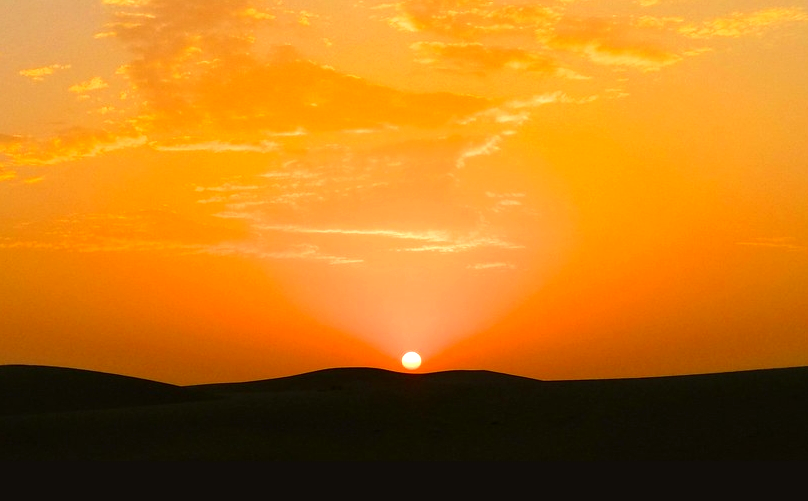
Sunrise in Xinjiang
2. A Sweet Gift from the Time Difference
The time difference also brings Xinjiang a delightful gift—exceptionally sweet fruits.Famous for its agricultural bounty, Xinjiang produces a variety of signature fruits, including Korla pears, Aksu apples, Turpan grapes, and Hami melons.Most of these fruits ripen in the summer, when strong sunlight and long daylight hours enhance photosynthesis, helping plants produce more sugars and other nutrients.
As a result, visitors to Xinjiang are treated not only to breathtaking landscapes but also to fruits that taste like sunshine.

Fruits from Xinjiang
How Travelers Can Adapt to the “Time Difference”
1.For Chinese Travelers: Adjusting to a New Rhythm
Although Beijing Time is used officially, Xinjiang’s daily rhythm is distinctly slower and later than the rest of the country. For domestic travelers, this can initially feel disorienting. Here are some helpful tips:
- Be Flexible with Your Itinerary
- Don’t plan sightseeing or meals too early. Start your day a bit later to align with local life and avoid peak sunlight.
- Check Opening Hours Ahead of Time
- Many attractions and restaurants open later than expected. Always double-check schedules or ask your guide to avoid surprises.
- Adapt Eating and Sleeping Times
- Consider shifting lunch and dinner to later hours. Sleeping in a bit can help your body adjust to the new rhythm without exhaustion.
- Respect Local Customs
Xinjiang is home to diverse ethnic groups with distinct customs. Patience, respect, and cultural sensitivity will enhance your travel experience.
2.For International Travelers: Dual-Time Awareness
For tourists coming from abroad, the concept of “Beijing Time” in Xinjiang can be even more confusing. To make the most of your visit:
- Understand the Dual-Time System
- Locals may refer to both Beijing Time and Xinjiang Time in conversation. Clarify which time they’re using to avoid misunderstandings.
- Set Dual Clocks
- Use your phone or watch to display both Beijing Time and local Xinjiang Time for easy reference.
- Respect Cultural Practices
- Xinjiang has a large Muslim population, and religious observances may affect restaurant hours or public activities—especially on Fridays and holidays.
- Allow a Buffer Day
If arriving from overseas, give yourself a day to acclimate to local rhythms and avoid over-scheduling your first day.
Cultural and Daily Life Impacts of the Time Gap
In Everyday Speech: Locals might say “Beijing time” or “Xinjiang time”—don’t hesitate to ask for clarification.
Symbol of Coexistence: The time difference reflects the cultural coexistence of multiple ethnic groups and is a microcosm of Xinjiang’s unique social geography.
Xinjiang’s “time difference” is more than just a shift on the clock—it’s a fascinating blend of geography, culture, and history. Once you understand it, you’ll find yourself moving more fluidly through this vast land, appreciating both the unique pace of life and the cultural richness that time has helped shape.
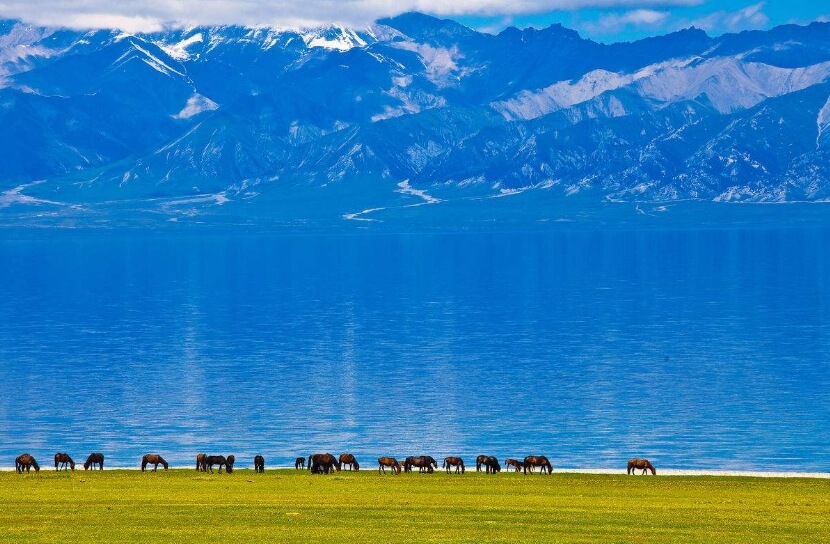
If you’d like to plan your trip to Xinjiang more easily and learn more about local time differences, culture, and itinerary options, feel free to contact China Dragon Travel We offer customized, efficient, and comfortable travel plans to help you explore the unique charm of Xinjiang in depth.
Get in touch with China Dragon Travel for more travel information and personalized support!




